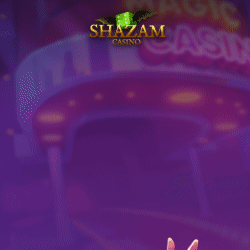
Side bets really make the game more exciting and enhance player experience. And with a little bit of luck, these can also be way more rewarding than the main bets players are required place when playing blackjack.
However, while optional bets may pay out several times a player’s stake, they also carry much greater risk.
Out of the myriad of additional bets a player can place while at the table, 21+3 is arguably the most popular one. This optional bet can be spotted at blackjack tables around the world, but is particularly popular in Las Vegas and the UK. Online casinos feature it, as well.
Best Online Blackjack Bonuses
But what does 21+3 involve and can an advantage player beat this side bet? With this latest blackjack article we are trying to answer these questions. Our piece is based on analysis of this side bet by former advantage player and advantage play analyst Eliot Jacobson.
What is 21+3?
Side bets involve what cards the player and the dealer will be dealt. These are placed before any card is dealt, at the same time as the main bet is placed. The 21+3 side bet is based around the outcome of the player’s two cards and the dealer’s upturned card. The possible outcomes are a flush, straight, three of a kind, or straight flush.
In the original version of the 21+3 side bet, the payout for any of the above outcomes is 9 to 1, while the house edge is 4.24% in a four-deck game, 3.24% in a six-deck game, and 2.74% in an eight-deck game.
There are many other versions of this optional bet but we will stick to the original 21+3 throughout this article.
Blackjack is a game that involves both elements of skill and chance. With side bets, it can be said that in most cases chance prevails over skill.
But can players beat the 21+3 side bet and is it even worth trying? Eliot Jacobson has shared some thoughts on his APHeat.net website, which is now owned and managed by 888casino and is part of the online casino’s blog section.
Learning to Keep a Running Count
Running Count Keeping Hints
Learning to Keep a True Count
True Count Drills
Jacobson’s perfect play analysis of the 21+3 side bet?
To find out whether advantage play is possible against 21+3, Jacobson ran a perfect play analysis of the side bet.
For the purposes of his analysis, Jacobson used a six-deck shoe (312 cards). He went through a shoe one hand at a time. Before each hand was dealt, he calculated the exact edge for 21+3 based on the cards left in the shoe. He only placed a 21+3 bet when the player had the edge.
Jacobson ran 10,000 shoes to get average edge of 3.88% for perfect play, with the cut card placed at 260 (or one deck away from the end of the six-deck shoe). Players get that edge at 7.09% of the hands at this point in the game. The win per 100 hands is 0.27.
At other point, let’s say half-way through the shoe (156 cards) the player has average edge of 1.29% and has that edge on 5.24% of the hands. Deeper into the game, with 26 cards remaining the edge is 16.28% and the player has that edge on 34.53% of the hands.
As mentioned above, Jacobson ran a perfect play analysis, which means that in order to achieve these results at a land-based casino, the player will need to use some software in real time. However, this is not permitted.
The Suit Count Approach
Jacobson also compared how what he called a “human-feasible card counting method” performed compared to the above perfect play approach.
He targeted flushes for the purpose of his analysis. According to the former advantage player, any strong imbalance in the card suits gives greater edge to the player.
Jacobson considered a situation where there were 40 cards left, 10 of each of the four card suits. The number of ways of getting a three-card flush is 480. If the suits of the cards are not evenly distributed and there are, for example, 15 cards of one suit, 10 of other, 10 of the third, and 5 of the fourth, the number of ways a player can get a three-card flush is 705.
In other words, when the distribution of suits is more unbalanced, the player gets greater edge if they have placed a 21+3 side bet.
The player or a team of players needs to keep track of the number of cards in each suit left in the shoe. The card counter/s then compute the difference between the most and least abundant suits.
The difference is then turned into a true count. If that conversion produces a sufficiently large true count, the player has an advantage.
Jacobson ran a simulation of 100 million six-deck shoes dealt to 260 cards with 52 remaining cards. Using the suit count against 21+3, he found that the player has an average edge of 5.04% at this point and has this edge on 3.53% of the hands. The suit count approach returns 0.18 units per 100 hands. As noted above, the perfect play return stands at 0.27 units per 100 hands.
Jacobson noted that an advantage player is not likely to opt for the suit count system because of its complexity and its low return.
And even if a better card counting system is developed, the best a player could get is 0.27 units per 100 hands, which is still a low return. In other words, as Jacobson pointed out, 21+3 “has a minimal vulnerability to card counting.”













